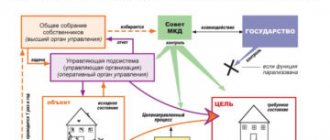Sale of land and industrial plots
Industrial land plots are plots of land on which industrial and warehouse enterprises, as well as related infrastructure, can be located. Almost all industrial land is divided into two types - these are areas under old enterprises (brownfield) and land free from any development (greenfield). Considering the shortage of engineered land in the greenfield format, any opportunity to buy industrial land that is free from development and has no problems with connecting to communications is a great success for entrepreneurs.
Timing and cost
How much does SPOZU cost?
For experienced specialists, if they have all the necessary documentation, drawing up an SOPSU will not be difficult.
The deadline for completing the work is set independently by each company. It can last several days or weeks, depending on the scope of the specialist’s work and the information provided by the customer.
The cost of such services may vary depending on the region and the contractor.
On average, it ranges from three to five thousand rubles. The payment procedure is discussed by the customer when concluding an agreement with an employee of the design company.
Individuals wishing to build their own home will need to collect the required list of permits and documents. These include the site development plan (SPOZU). Without its registration, it will not be possible to obtain the permit necessary for construction.
However, to obtain it, only correctly drawn up and executed schemes for organizing land plots are suitable. The owners of land plots themselves can do the SPOZU, but it is better to entrust its development to specialists.
How to make a master plan for a site with a house? In this video you can also learn how to make a general site plan diagram (general plan):
See also Phone numbers for consultation Dec 13, 2021 kasjanenko 1183
Share this post
Discussion: 3 comments
- Svetlana says:
01/30/2020 at 08:14The article was very helpful. Specifically. clear, compact.. Thank you! God bless you!
Answer
- Ivan says:
04/27/2020 at 00:34
If a person is the owner of a land plot, why should he coordinate the use of this plot with someone other than perhaps his neighbors? Doesn’t the state have other problems?
Answer
- 5master5 says:
05/18/2020 at 12:08
I bought a garden plot where the house was originally built incorrectly. It is located close to the neighbor's fence and does not withstand the standard meters. I can’t imagine how to order a site plan now.
Answer
Take it into circulation
But in many regions, most of the land in and near populated areas is privately owned, which creates serious problems for local and regional authorities in the development of housing construction. As a rule, vacant areas are so-called “inconveniences” without roads or communications. Construction there is very expensive, and people don’t want to go there.
For cities with developed infrastructure, the solution to the problem could be development programs for built-up areas. This is practically the same thing as what is called renovation in Moscow. However, in the capital, a special law had to be passed to launch it. In the regions, the development of built-up areas is still going poorly: firstly, there are no investors, and secondly, there is no adequate regulatory framework. A lot of questions have not been resolved: how to include certain territories in the program, on what boundaries and grounds, what is the role of property owners, how to make decisions...
The State Duma is considering two documents with options for resolving these problems: the “Khovanskaya Law” (FZ-59 “On Amendments to Article 17 of the Housing Code of the Russian Federation”) and the draft of the Legislative Assembly of St. Petersburg. In addition, a bill on this issue is being prepared in the Federation Council Committee on the Federal Structure. But so far there is no concrete decision from the legislator.
For cities with developed infrastructure, the solution to the problem could be development programs for built-up areas
Therefore, unfortunately, where there is no free land, but some area in the center needs to be renovated, the only option is to recognize the houses as unsafe. Which sometimes leads to wild consequences. For example, in Tatarstan, many decent houses in Zelenodolsk, Almetyevsk and other cities are immediately recognized as unsafe. People resist and are indignant, but the authorities have no other way to get land. Although the development of built-up areas could become an important tool for urban renewal and solving housing problems. Moreover, the changes made to 85-FZ allow the Housing and Communal Services Reform Fund to co-finance projects for the development of built-up areas if citizens are being resettled from dilapidated housing. However, the projects themselves are not yet enough.
Developers are forced to buy plots at a fairly high price. If we still want to make housing more affordable, we need to provide for a reduction in the cost of land. One option is to sell according to the “Dutch auction” scheme: the one who offers the lowest price wins. Such competitions are held all over the world.
In Russia there is a huge amount of land that is taboo, including those associated with defense enterprises and other closed structures. A significant part of this territory is occupied by non-core facilities. In general, we essentially have a lot of plots for development, but we need a set of measures to consistently bring them into circulation.
Commentary on Article 263 of the Civil Code of the Russian Federation
1. The legal possibility of development arising from the owner of a land plot is one of the important administrative powers of the subject of property rights (see commentary to Article 260). However, this authority is not absolute. His discretion, his own decision on the use of the provided land plot is subject to the law, other regulatory legal acts, and must not violate the rights and legally protected interests of other persons (see commentary to Article 209). The same applies to the owner’s decision to reconstruct buildings, structures and structures or demolish them. The same rules apply if the owner allows an unlimited or indefinite number of other persons to build on his site. These include members of his family, and persons who have established family ties with him, but continue to live together with him and use the same land plot, as well as those who do not live together with him, i.e. any persons at his discretion. His will is primary, but not decisive.
If a plot of land or a building, structure, structure on this plot is in common joint or shared ownership, then the general rules established in Chapter. 16 (see commentary to Articles 247, 249, 253, 256, 257, 259), Ch. 7 Family Code, art. 4, 6 - 8 of the Law on Peasant (Farm) Economy.
The commented article points to special legislation to which the owner’s right to construct buildings, structures, structures, their reconstruction, and demolition should be subject. This is urban planning legislation (Urban Planning Code, Federal Law of November 17, 1995 N 169-FZ “On Architectural Activities in the Russian Federation” (SZ RF, 1995, N 47, Art. 4473), building codes and regulations approved by the State Construction Committee of the USSR and Russia, valid for seven years from the date of entry into force of the Federal Law of December 27, 2002 N 184-FZ “On Technical Regulation” (SZ RF, 2002, N 52 (Part I), Article 5140) until the entry into force of the relevant technical regulations.Their requirements for construction proceedings are subject to mandatory fulfillment only in the part corresponding to the purpose: a) protection of the life and health of citizens, their property or the property of legal entities, state (municipal) property; b) protection of the environment, life or health of animals and plants; c) preventing actions that mislead acquirers.
Naturally, the requirements for the intended purpose of the land plot are subject to mandatory compliance (see commentary to paragraph 2 of Article 260), which is inextricably linked with the permitted use, determined by the category of land and territorial zone.
Thus, on the lands of specially protected territories and objects, in particular on the lands of state natural reserves, activities not related to the preservation and study of natural complexes and objects and not provided for by federal laws and laws of the constituent entities of the Russian Federation are prohibited. Partial economic and recreational use is possible on specially allocated land plots and under the conditions of a special legal regime specifically established for them.
In addition to the Land Code (Article 96), the special Federal Law of February 23, 1995 N 26-FZ “On Natural Healing Resources, Medical and Health Areas and Resorts” (SZ) applies to the lands of medical and recreational areas and resorts included in this category. RF, 1995, No. 9, Article 713).
On lands of recreational significance (also included in the category of specially protected areas and objects), activities that do not correspond to their intended purpose are prohibited; the same applies to lands of historical and cultural significance (Article 99 of the Land Code). On certain lands of historical and cultural significance, incl. On lands where historical and cultural objects are located that are subject to research and conservation, any economic activity may be prohibited. In order to preserve the historical, landscape and urban environment, in accordance with federal laws and the laws of the constituent entities of the Russian Federation, zones for the protection of cultural heritage sites are established, the special legal regime of which prohibits activities incompatible with the main purpose of these lands (see Commentary on judicial practice: Issue 8. M., 2002. S. 29 - 43).
Particularly valuable lands include territories with natural objects and cultural heritage objects of special scientific, historical and cultural value (typical or rare landscapes, communities of plant and animal organisms, etc.). Information about them is indicated in the documents of the state land cadastre, state registration of rights to real estate and transactions with it (Article 100 of the Land Code). The Federal Law “On Environmental Protection” (Article 60) provides for the maintenance of the Red Book of the Russian Federation, in which animals and plants are listed if they are in danger of extinction. Economic and other activities leading to a negative impact on the natural environment are prohibited (Article 59).
Forest fund lands include forest lands (whether covered with forest or not, but intended for its restoration) and non-forest lands intended for forestry (clearings, roads). Data on the boundaries of these lands are entered into the state land cadastre (Article 101 of the Land Code). Forest lands can be converted into non-forest lands in the established order for their use for purposes not related to forestry, use of the forest fund, as well as for the transfer of forest fund lands to lands of other categories. Temporarily unused non-forest lands can be leased for up to five years for agricultural production purposes.
The lands of the water fund include territories occupied by water bodies, lands of water protection zones of water bodies, right of way and protection zones of water intakes, hydraulic engineering and other water management structures, objects (Article 102 of the Land Code). On these lands, construction and operation of structures can be carried out to provide the population with water, state and municipal needs. Water protection zones with a special legal regime are established here.
2. The commented article deals with a land plot formed and assigned to the right of ownership by a citizen (legal entity). He has the right to erect residential, industrial, cultural and other buildings, structures and structures in accordance with the intended purpose of the land plot and its permitted use in compliance with the requirements of town planning regulations, construction, environmental, sanitary and hygienic, fire safety and other rules and regulations (Article 40 of the Land Code).
The principle of land legislation (subclause 5, clause 1, article 1 of the Land Code) is the unity of fate of the land plot and other real estate objects firmly connected with it, where the plot determines the fate of the real estate. “The right of ownership to buildings, structures and other newly created real estate, subject to state registration, arises from the moment of such registration” (see commentary, Article 219), if the erected building, structure or structure is not an unauthorized construction (see commentary. to Article 222). There is no right of ownership for an unauthorized construction, and it is subject to demolition if it is created on a land plot that is not allocated for these purposes in the established manner. And although a building, structure or structure was erected by the owner of the land plot, they can be declared unauthorized if the building violated the established regime of permitted use or was erected without obtaining the necessary permission or in significant violation of urban planning and building codes and regulations. Thus, the commented article clarifies the administrative interpretation of the content of Art. 222 in relation to the owner of the land plot.







